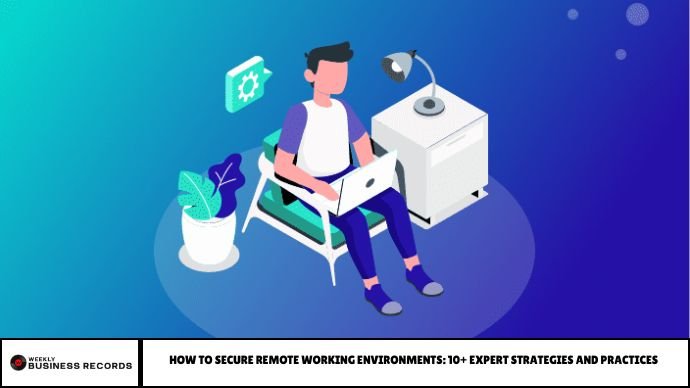Introduction: Is Your Remote Workforce Truly Secure?
As remote work cements itself as a permanent fixture in modern business, securing these environments has become a top priority for organizations worldwide. A recent Gartner report reveals that 74% of CFOs plan to permanently shift at least some employees to remote roles. While this transition offers clear advantages—such as increased flexibility, higher productivity, and access to a global talent pool—it also introduces significant cybersecurity challenges.
Remote setups often lack the robust protections found in traditional office networks. This gap has created a wider attack surface for cybercriminals. According to Tenable, over 50% of remote employees use personal devices to access corporate data. Meanwhile, 71% of security leaders admit they lack visibility into employees’ home network environments. As a result, 67% of cyberattacks now specifically target remote workers.
In response, organizations must take decisive action to safeguard sensitive information and intellectual property. The rapid expansion of remote work requires an equally agile and comprehensive cybersecurity approach. Businesses must reassess their cyber risk profiles, implement updated risk management strategies, and provide consistent security training and simulation exercises tailored to a distributed workforce.
By the end of this article, you’ll have a clear, actionable roadmap for securing your remote work environments—helping you reduce exposure, strengthen defenses, and ensure long-term operational resilience in the era of “work from anywhere.
In 2024, over 40% of global professionals work remotely at least part-time—an all-time high, according to Statista. Yet with flexibility comes risk: cyberattacks targeting remote endpoints increased by 148% in the last year alone (IBM, 2024).
So how do businesses ensure that remote work doesn’t open the floodgates to data breaches, compliance issues, and lost trust?
This article outlines 10+ expert strategies to secure remote working environments. From basic tools to advanced frameworks, you’ll gain practical insights to defend your systems while empowering a productive and safe remote team.
1. Use a Reliable Virtual Private Network (VPN)
A VPN creates a secure, encrypted tunnel for remote connections. This is the first line of defense for employees accessing sensitive data from public or home networks.
- Choose VPNs with AES-256 encryption
- Regularly rotate encryption keys
- Ensure split tunneling is disabled for higher security
2. Enforce Multi-Factor Authentication (MFA)
Passwords alone are no longer enough. MFA adds a critical layer of protection by requiring a second method of verification.
- Combine passwords with SMS, biometric, or app-based codes
- Prioritize platforms supporting FIDO2 or TOTP standards
- Require MFA for all critical systems and admin access
3. Adopt Endpoint Detection and Response (EDR)
Modern EDR solutions go beyond antivirus. They monitor behavior, flag anomalies, and allow rapid incident response.
- Choose tools with real-time threat intelligence
- Automate quarantine of suspicious devices
- Ensure remote logging and reporting
4. Apply Zero Trust Security Principles
Zero trust assumes that no device or user is trustworthy by default, even inside the network.
- Use identity-based access control
- Limit permissions to the minimum necessary
- Monitor continuously with behavior analytics
5. Keep Devices and Software Updated
Unpatched software is a top target for cybercriminals. Automate updates wherever possible.
- Use Remote Monitoring and Management (RMM) tools
- Set patch deployment schedules with rollback options
- Maintain an inventory of all remote assets
6. Secure Collaboration Tools
Zoom, Teams, Slack, and others can be entry points for attackers if misconfigured.
- Use end-to-end encryption
- Control external sharing permissions
- Regularly audit active sessions and access logs
7. Data Encryption at Rest and in Transit
Encryption safeguards data whether it’s stored or traveling across networks.
- Use BitLocker or FileVault for endpoint encryption
- Ensure TLS 1.3 for data in transit
- Encrypt backups stored in the cloud or on-site
8. Centralize Cloud Access and Identity Management
Cloud sprawl increases exposure. Consolidate access with Single Sign-On (SSO) and Identity Access Management (IAM).
- Use platforms like Okta, Azure AD, or Google Workspace
- Apply role-based access control (RBAC)
- Disable accounts immediately upon termination
9. Implement Strong BYOD (Bring Your Own Device) Policies
When employees use personal devices, risks multiply.
- Require registration of BYODs in an MDM (Mobile Device Management) system
- Mandate use of corporate VPNs and app whitelists
- Prevent local downloads of sensitive files
10. Train Employees in Cyber Hygiene
Even the best tools fail if employees fall for phishing or misuse credentials.
- Run quarterly security awareness training
- Simulate phishing campaigns and measure results
- Create a clear incident reporting process
11. Continuously Monitor and Audit Your Security Posture
Security isn’t static. Regularly audit tools, policies, and practices.
- Conduct penetration tests biannually
- Track KPIs like Mean Time to Detect (MTTD) and Mean Time to Respond (MTTR)
- Review user access logs for anomalies
FAQs
1. What is the most important tool for remote work security?
A VPN combined with MFA offers foundational protection for most organizations.
2. How often should security training occur?
Ideally, every quarter, with updates on emerging threats.
3. Is using public Wi-Fi safe with a VPN?
Yes, but only if the VPN is active and split tunneling is disabled.
4. What’s the best way to secure BYOD devices?
Enroll them in an MDM system and apply company policies consistently.
5. How do I know if my systems are compromised?
Look for signs like unusual logins, unauthorized changes, or unusual data flows—EDR tools help detect these.
6. Are collaboration tools like Zoom safe to use?
Yes, with proper configuration, encrypted calls, and access controls.
Conclusion
Securing a remote working environment isn’t about a single solution—it’s a multi-layered strategy that combines tools, policies, and awareness. By applying these 10+ expert strategies, your organization can prevent breaches, comply with regulations, and foster a trustworthy remote culture.
Start by auditing your current setup, then prioritize the quick wins—like enforcing MFA and VPN use—while planning for longer-term practices like Zero Trust and IAM integration.


